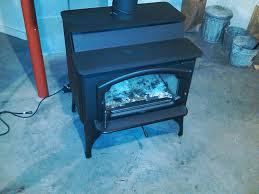Wood Stoves are Still a Popular Supplemental Heating Source
By Mark J. Donovan
|
|
Though some urbanites may think that the wood burning stove is simply an old relic from the past, they are sorely wrong. Wood stoves are far from limited to winter ski and hunting lodges. Many people around the world, including the United States, use wood burning stoves as a second or supplemental heating source. Some people still even use wood stoves as their primary heating source and for cooking. And it’s a no wonder. Where wood is plentiful it’s a much cheaper fuel alternative than burning oil, gas, coal, or electricity.
Also, in many cases people can harvest and prepare the wood themselves saving even more costs on heating their homes. |
Though in many ways wood burning stoves have not changed much throughout the centuries, wood stove manufacturers continue to produce new and beautiful wood stove designs each year. Besides providing functional value many free-standing wood stoves that are manufactured today act as central focal points in family rooms and great rooms. With their beautiful ornate designs, and many with glass viewing windows, the timeless classic wood stove has been transformed into a gorgeous decorative piece that offers both functionality and beauty to a room or home.
Woods burning stoves have traditionally been built in either cast iron or 3/16 or ¼ inch rolled stainless steel. However they are also manufactured out of ceramic and soapstone. They are available in tall and narrow shapes, as well as short and fat styles. And again, many can be purchased with viewing windows to provide a touch of ambiance. They also come in various sizes, so it’s important to purchase one that is appropriately sized for the room or home it is expected to heat. Too small and you may end up not being unable to adequately heat the room or home. Alternatively, if you buy one too large you may find yourself roasting when it’s going.
To mitigate the risk of a chimney fire, the chimney should be cleaned a couple of times a season if you’re burning several cords of wood. Also, burn only dried hardwood in your wood stove. Burning wet wood or soft wood is a recipe for a chimney fire, high soot production, and poor heat output.
So before buying any timeless classic wood burning stove do your homework first and select one that is best for your home’s particular heating needs.
For information on Restoring Baseboard Heating Element Covers, see the Restoring Baseboard Heating Element Covers eBook from HomeAdditionPlus.com. The Restoring Baseboard Heating Element Covers Ebook provides easy to understand, step-by-step instructions, on how to restore Baseboard Heating Element Covers so that they look new again. Pictures are included for every key step in the process.
For information on how to maximize a wood stove’s heating efficiency, see HomeAdditionPlus.com’s Installation of Hood over Wood Stove eBook.
For information on how to clean a wood stove pipe, see HomeAdditionPlus.com’s How to Clean a Wood Stove Pipe eBook.
Related Information
Additional Heating and Cooling Resources from Amazon.com
 |
 |
Free Heating and Cooling Price Quotes with No Obligation!
Fill out our 3-5 minute quick and easy form, and receive a free price quote on heating & cooling from one of our pre-screened and licensed HVAC contractors. This process is free and there is no obligation to continue once you receive your heating & cooling price estimate.


